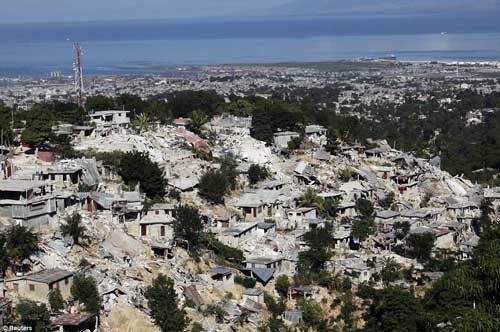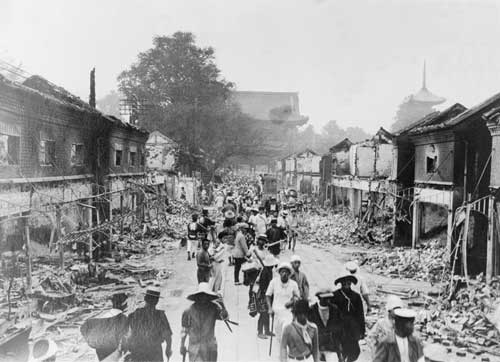
Urban planners Matias Echanove and Rahul Srivastava have a provocative essay in the New York Times about how post-war Tokyo can serve as an example of rebuilding Haiti. Researchers and activists who have worked in Tokyo and Dharavi, Mumbia, the authors evoke the strength of Port-au-Prince in its “urban landscapes (of) communities, street life, resourcefulness, aspirations and dynamic local exchanges.”
They urge a decentralized and highly participatory urban renewal with government investment in infrastructure and dense, low-level structures built by local efforts. I like their view that cities are about resourceful people and not large-scale developments. It is particularly timely to remember now how Tokyo rebuilt after the war (and the 1923 Kanto earthquake) and became a megacity that combines futuristic elements with a vibrant civic life.
You can learn more about their work at Urbz, “user-generated cities.” Below is an image from the Japan Society website of the 1923 Kanto earthquake in Tokyo.



